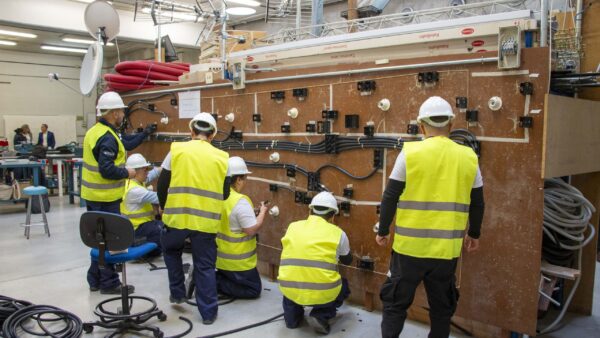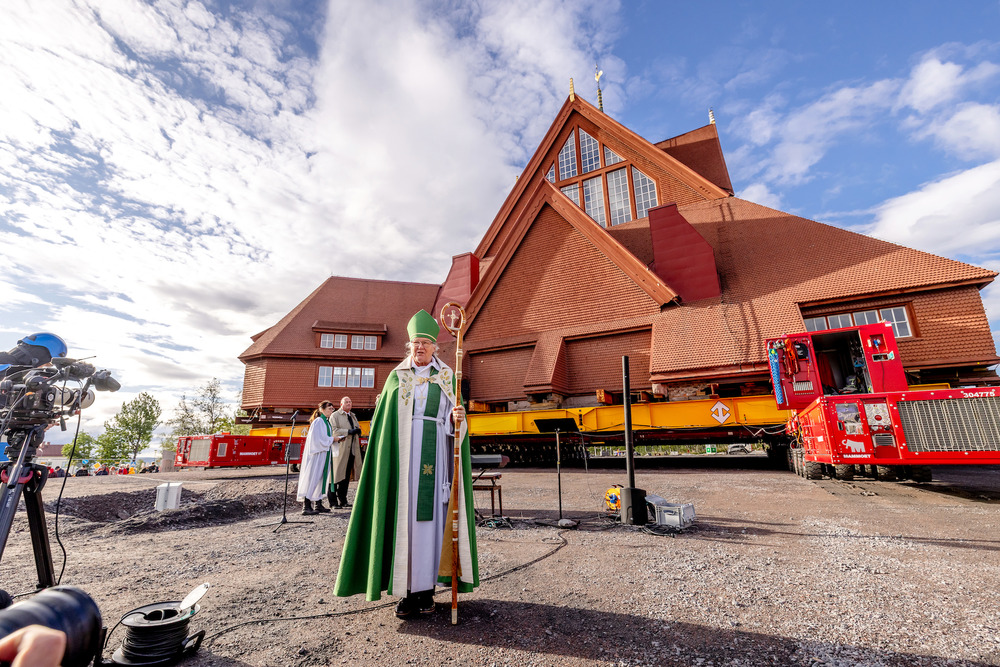
The Swedish city of Kiruna, which is gradually shuffling itself 5km to the east to make way for an expanding iron ore mine, this week celebrated the successful journey made by one of its most treasured architectural landmarks – the 113-year-old iconic Kiruna Church.
The King of Sweden was among thousands who came to watch the two-day operation, dubbed “The Great Church Walk”.
Sweden’s most northerly city with a population of 17,000, Kiruna sits on ore deposits at the world’s largest underground mine.
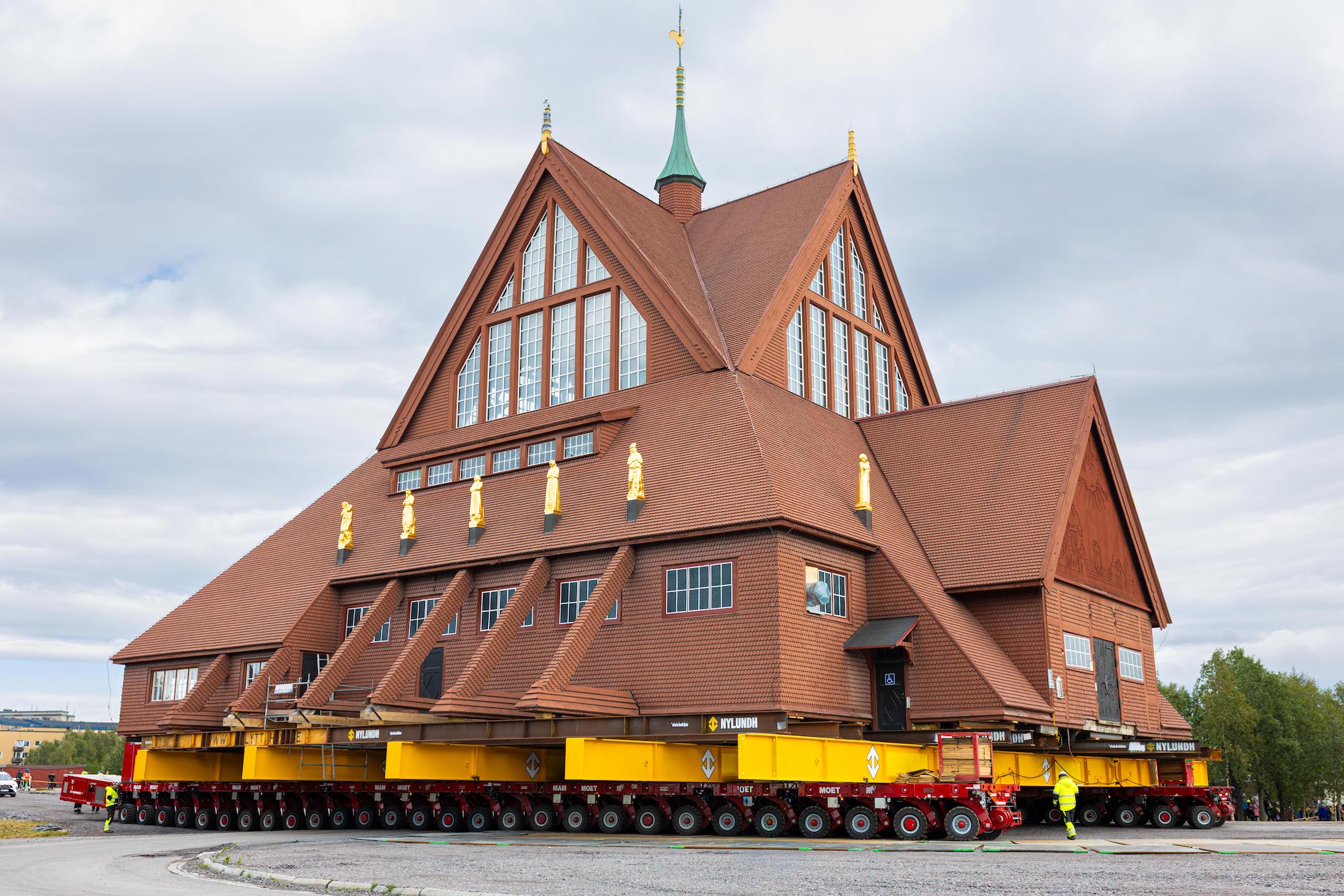
State-owned mining company LKAB wants that ore so, since 2014, the city has been incrementally taking buildings down and rebuilding them in new locations to the east under a 100-year master plan devised by Swedish architects White Arkitekter.
One of Sweden’s biggest wooden structures
Completed in 1912, and once voted Sweden’s most beautiful building, Kiruna Church is one of the country’s largest wooden structures.
Civil engineering firm Veidekke and LKAB hired Mammoet to move the 713-tonne building in one piece.

Mammoet said the job took 1,000 hours of planning and preparation.
It worked with Veidekke and Swedish wood engineers to model and test the building’s response to lifting and moving.
The operation was timed for August to avoid adverse weather that could jeopardise the move.
The church was jacked up to a height of 1.3m and placed on steel beams supported by two trains of 28 axle lines of self-propelled modular transporters (SPMTs).
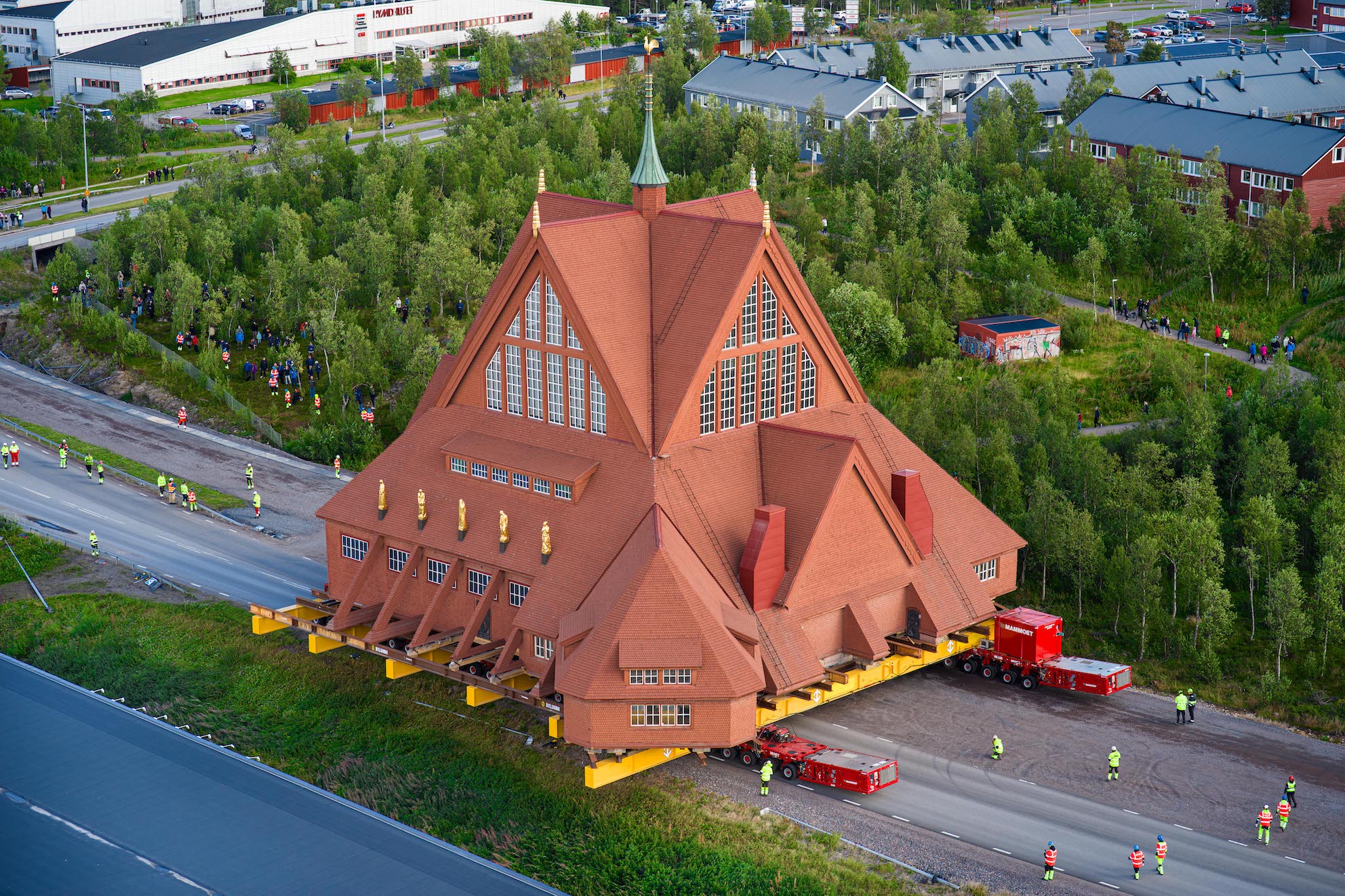
A monitoring system developed in-house ensured the structure remained stable throughout the journey, allowing for a maximum side-to-side tilt of 75mm.
Creating the route required temporary road widening and surface compacting. Mammoet conducted road tests using SPMTs loaded with counterweights to simulate the church’s axle load.
The relocation took place during daylight hours on August 19 and 20.
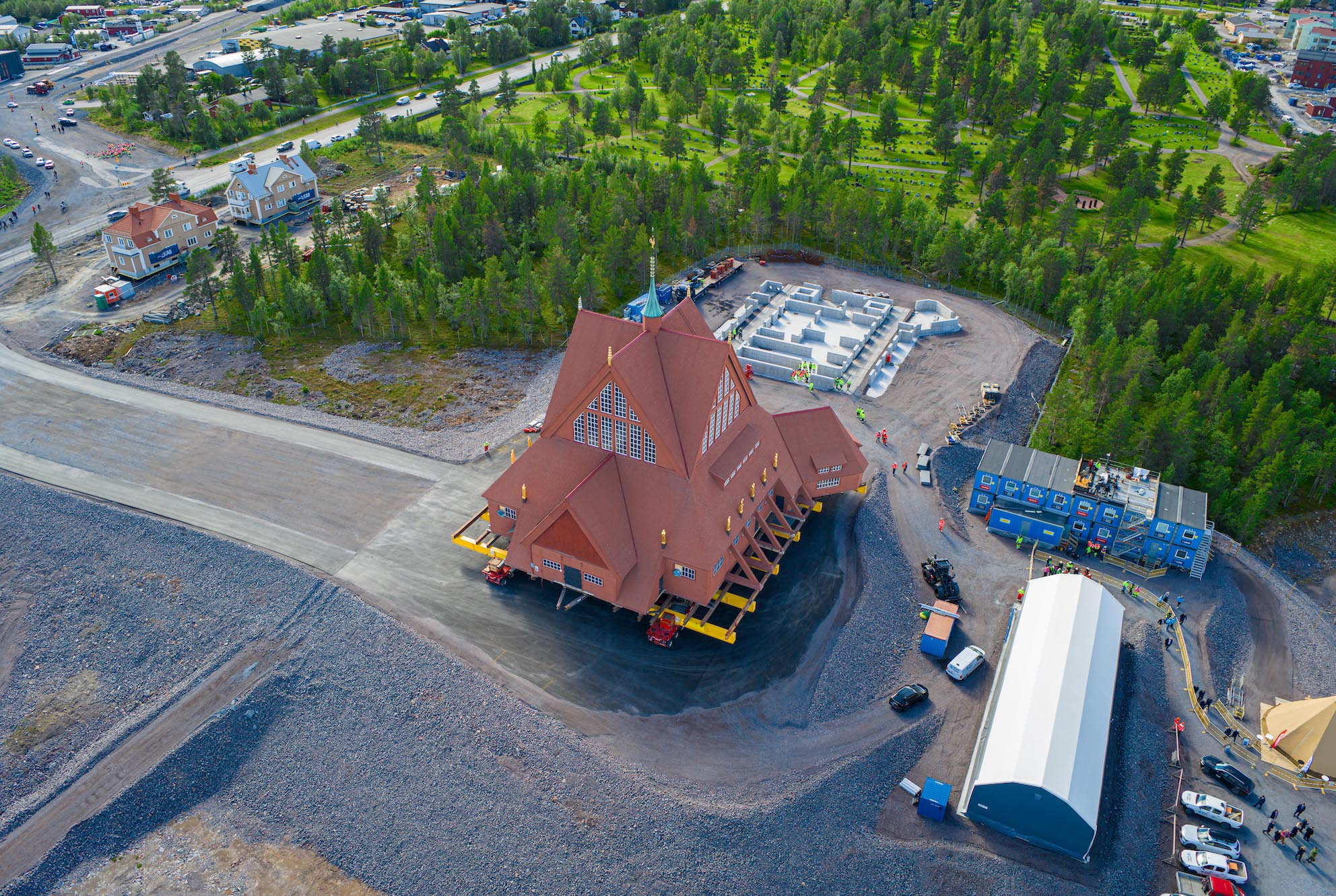
Once in place, Mammoet lowered the structure onto its new concrete foundations.
In the coming days, Mammoet will also relocate the church’s 90-tonne belfry with a different SPMT configuration.
- Subscribe here to get stories about construction around the world in your inbox three times a week
Further Reading:






